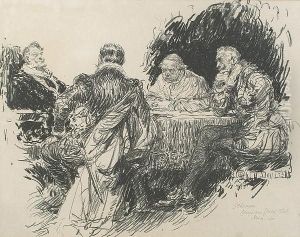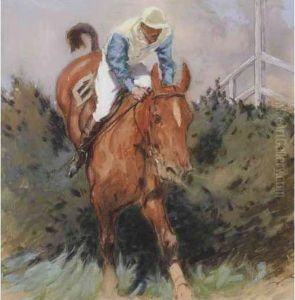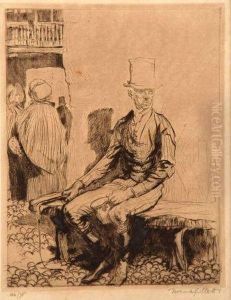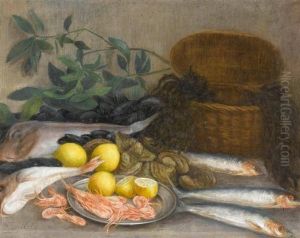Edward Frank Gillett Paintings
Edward Frank Gillett was a relatively obscure British artist, born in 1867. Not widely known in the mainstream art world, Gillett's work and life details are sparse in historical records. Most of his recognition, if any, comes from his association with the Newlyn School, a group of artists based in the fishing town of Newlyn in Cornwall, England, which was known for its realistic and en plein air paintings.
Gillett's style would likely have been influenced by the predominant styles of his time, such as Impressionism and the British plein air movement, which were characterized by their depiction of natural light, candid poses and compositions, and a focus on the daily lives of people. However, specific details about his contributions to art and his stylistic development are not well-documented.
The scarcity of information could be due to various factors, such as the possible overshadowing by more prominent artists of the Newlyn School, like Stanhope Forbes and Walter Langley, or simply due to the loss of records over time. Gillett passed away in 1927, and it appears that he did not gain significant fame or recognition during his lifetime or posthumously.
Without extensive records or a substantial body of work that is publicly known, Edward Frank Gillett remains an enigmatic figure within the art historical canon. Art historians and researchers might discover more about his life and works through dedicated archival research or the emergence of previously unknown works that could shed light on his artistic career.




